INTERVIEW WITH
NICK BRANDT
If we continue to do nothing, future generations will be inheriting the sad remnants of a once-vibrant living planet they will be inheriting dust.
Nick Brandt is a renowned British photographer and filmmaker known for his striking black-and-white photographs of African wildlife and landscapes. His work captures the raw beauty of Africa and its inhabitants in a way that is both elegant and powerful. He has spent over a decade in East Africa, developing an intimate understanding of the animals and their habitats, which is evident in the depth and emotion of his photographs. Brandt's work has been featured in numerous exhibitions around the world, and he has published several books of his photographs, including "On This Earth, A Shadow Falls," "Across the Ravaged Land," and "Inherit the Dust."
In addition to his photography, Brandt is also the founder of the Big Life Foundation, an organization that works to protect wildlife and habitats in East Africa. Through the foundation, he has been able to make a significant impact in the conservation of Africa's wildlife and their habitats. Brandt's dedication to conservation and his ability to raise awareness through his photographs have earned him widespread recognition and admiration. He continues to work tirelessly to protect Africa's wildlife and ensure that future generations can experience and appreciate the beauty of this precious land.
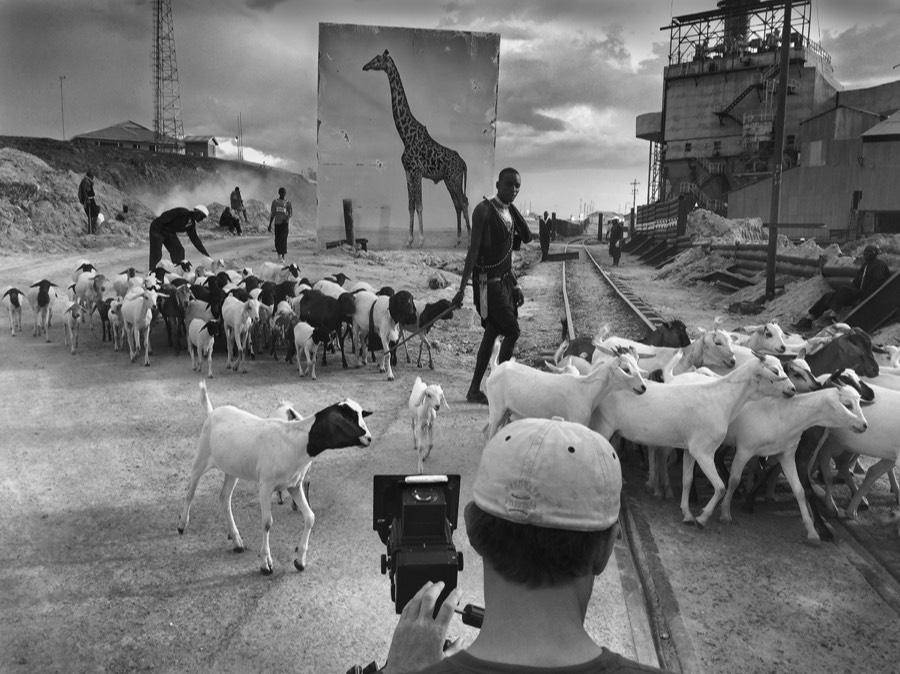
Your series Inherit the Dust has a somber spirit, reflecting environmental and human tragedies. Mural reproductions of your majestic animal portraits become silent witnesses of the decay of nature and society. How is this series related to the trilogy On this Earth, A Shadow Falls, Across the Ravaged Land? What changed from it? Tell us about how you came up with the concept.
At the very beginning, in the early years, even though I knew this extraordinary natural world was disappearing, I photographed it as a kind of paradise, albeit tinged with a melancholy.
In fairly short order, I saw the escalating speed of destruction, and wanted to address that more directly. It reached a point where it felt somehow irresponsible to take photographs that only showed beauty, and didn’t convey the significance and impact of the loss.
So On This Earth was kind of the honeymoon period; A Shadow Falls, as the title implies, began to show, through the progression of images, a transitions from a verdant world of plenty to a stark, denuded world of only a few lone animals; and Across The Ravaged Land showed man’s destructive influence directly for the first time, with images such as the rangers holding tusks of elephants killed at the hands of man.
The concept seemed kind of obvious in its conception – to photograph life-size panels in locations where animals such as these used to roam, but due to the impact of man, no longer do.
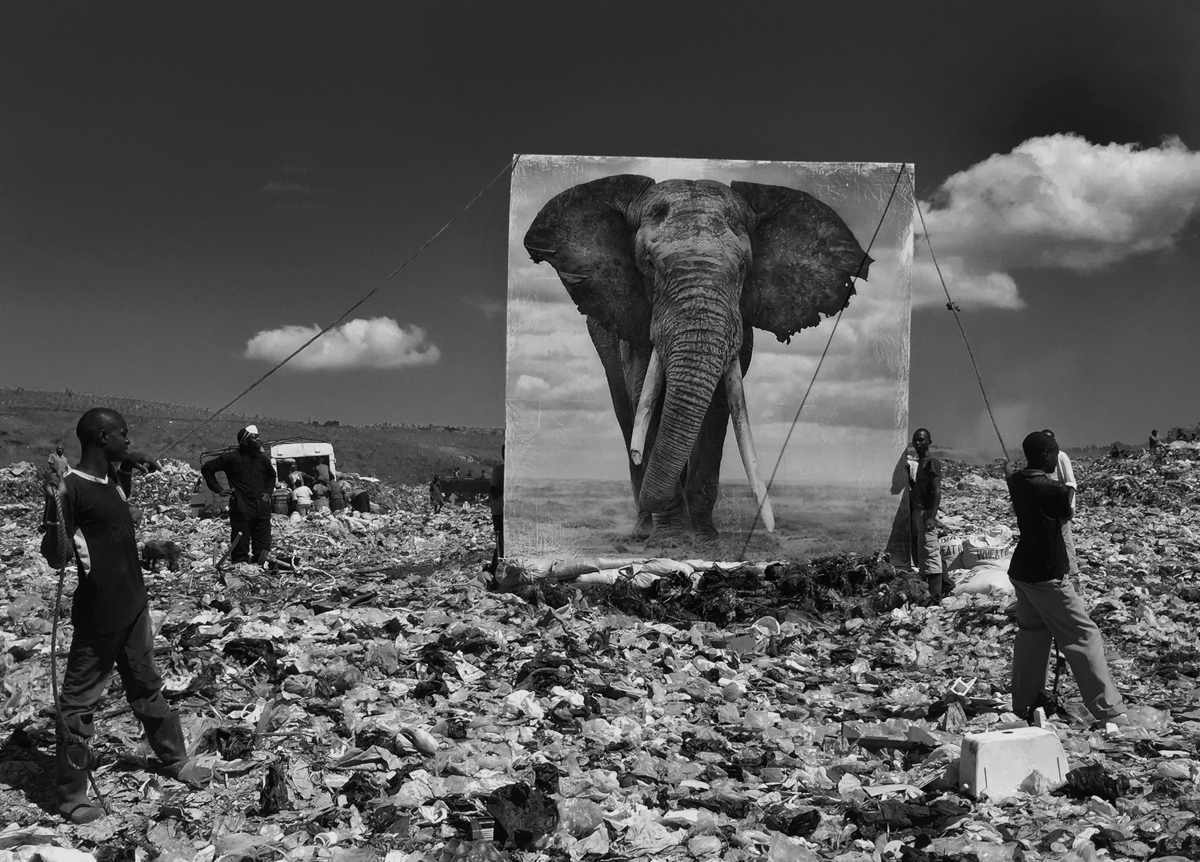
For most of us, Africa and its wildlife is a distant reality. How does it feel to visit these locations both when animals were roaming around and after they had been wiped out?
The locations in which I photographed the panels were all new places to me. I ever saw them in their wild state. It was not literally these animals in these locations, but animals like them.
What is the message that this series tries to convey? What impact would you like your photographs to have?
I grew up in England, former home of the elk and brown bear, of the wolverine and cave lion, of the woolly mammoth and woolly rhinoceros. Of course, this was before my time. For each of us, wherever we live on the planet, animals such as these walked in the very place where we now sit. But of course, most of these animals are long gone.
Meanwhile in parts of present-day Africa, albeit fewer parts by the day, equally extraordinary animals DO still roam. But the destruction of these animals, of these places, is not happening in the past, but in our own immediate present.
We are living through the antithesis of creation right now. It took billions of years to reach a place of such wondrous diversity, and then in just a few shockingly short years, an infinitesimally small moment in time, to annihilate that.
However, most of us still think that the destruction in Africa is to do with poaching, feeding the insatiable demand for animal parts from the Far East. Actually, it’s much more complex and monumental than that.
Mainly, it’s about us. Significantly, it’s about the terrifying number of us, and the impact of the very finite amount of space and resources for so many humans.
In terms of what impact I would like the photos to have, every little bit from every possible area of personal expression and communication helps. Being an incremental cog in the wheel of awareness can only help, I hope. However, the real people who can affect change are politicians and industrialists, and the world over, they are generally a fairly selfish, shameless group of people when it comes to the long term health of all beings on this fragile planet.
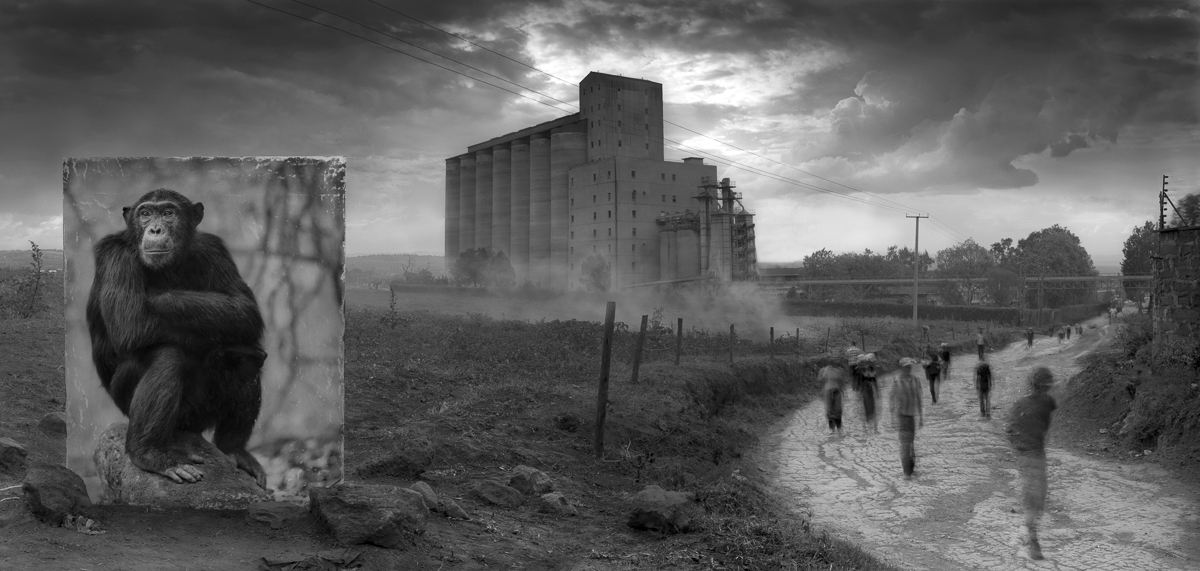
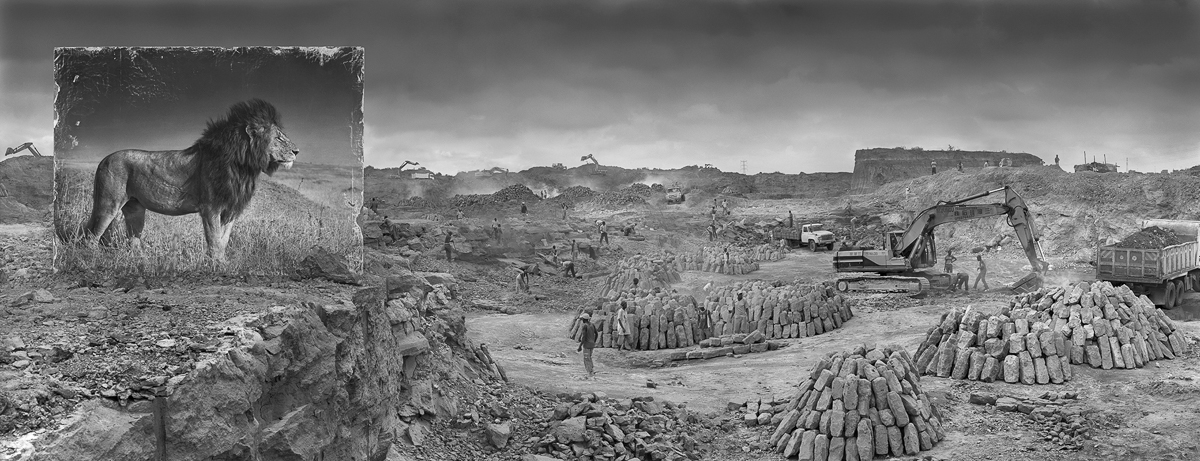
Many of these pictures seem to admit a dual interpretation. On one hand, the animal portraits appear as the sad reminders of wonderful creatures displaced and decimated due to the destruction of their habitats. On the other hand, these serene animals seem to show sympathy to humans, victims of the destruction they have caused. What do you think is the distinction, if any, between animals and humans? Are our destinies tied? Is this fate inevitably bleak?
Good question. Me, personally, I see little distinction between humans and animals. I regard both as sentient creatures equally worthy of life (I am vegan, unsurprisingly). Yes, our destines are completely tied by whether man chooses to pay attention to the environmental havoc that he is wreaking upon the planet.
So far, both historically (how little has been learned from past civilizational collapse due to environmental degradation), and in the present day, the fate does seem pretty inevitably bleak. However, that does not mean we should just give up and accept our grim demise. We should fight with all our hearts against this. As I always say, it is better to be angry and active than angry and passive.
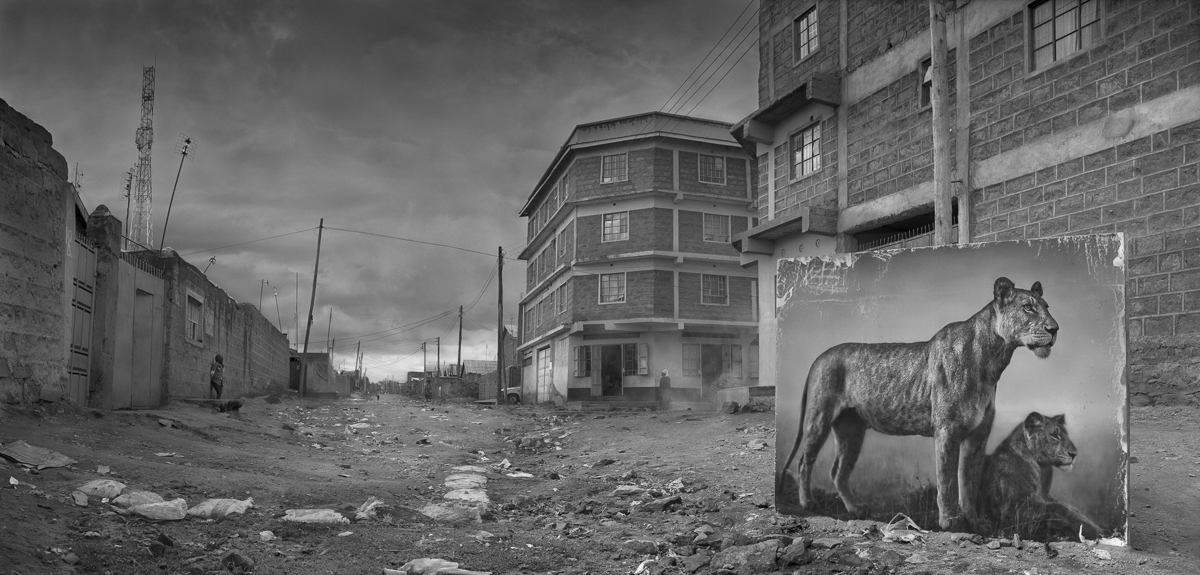
The murals involve pictures you took for previous projects that were never used before. What made them suitable for this series?
Sometimes these photos had gone unused for a very simple reason. I had five strong portraits of my favorite elephant of all - a 40 year old Amboseli bull by the name of Craig - but I felt at the time that I could only release two photos of Craig for Across The Ravaged Land. That left three unused portraits for this series.
There were also quite a number of the photos that originally, I had felt were flawed for more aesthetic reasons. But now, placed within the context of each very different setting, the portraits’ original weaknesses are transformed into a strength.
For example, in Underpass with Elephants (Lean Back Your Life is On Track), 2015, I took the good but unremarkable photo of an elephant mother and her calves a few years ago, but didn’t think it special enough to release. But when revisiting it for Inherit the Dust, I realized how much more emotional and impactful it could be in its new incarnation. Placing the photo as a life-size panel at life size in this setting, the elephants look trapped between the monumental concrete pillars, uncertain of where to turn. The elephants also appear to be, for me at least, connected to the humans lying to the right of them.
In QUARRY WITH GIRAFFE, 2014, I felt that with the original portrait of the giraffe looking over the plains, it was not quite powerful enough, because I had photographed him from behind. But here in the setting of the giant quarry, he appears to be looking out at his former home and seeing what has now become of it - a former paradise laid waste and stripped bare.
In ALLEYWAY WITH CHIMPANZEE, 2014, the panel of the chimp is set by a semi-stagnant stream of fetid sewage (where perhaps a creek with clear forest water once ran?). I had rejected the original portrait because I had hoped for more of a connection with the chimp. But here in the alleyway location, with his head bowed, he appears, in my mind, to be lamenting the loss of the world that he once knew, and the denuded world that is now there in its place.
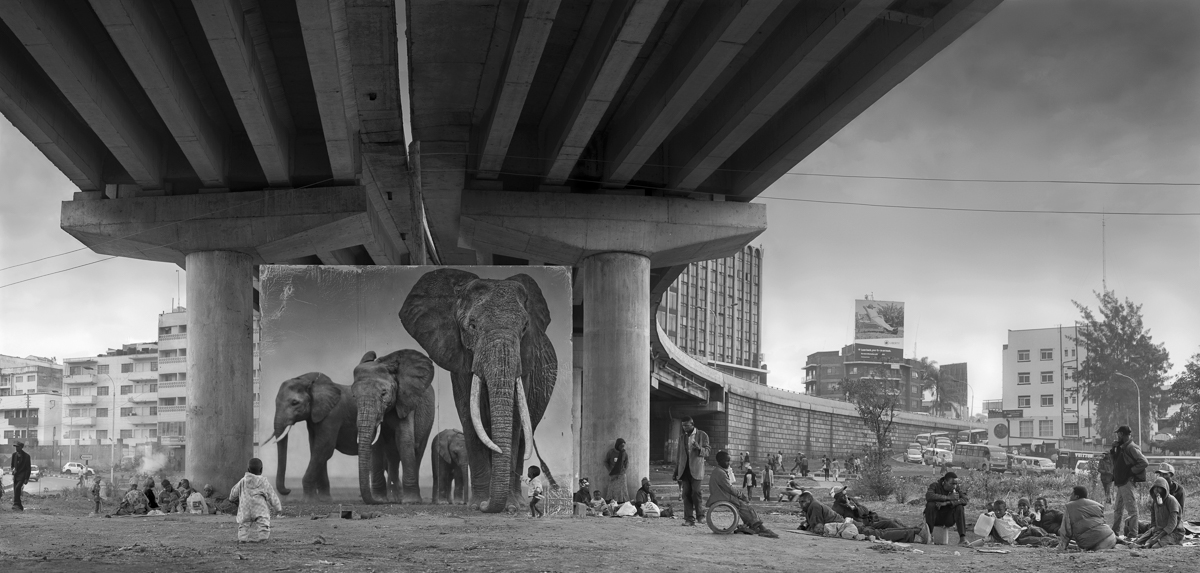
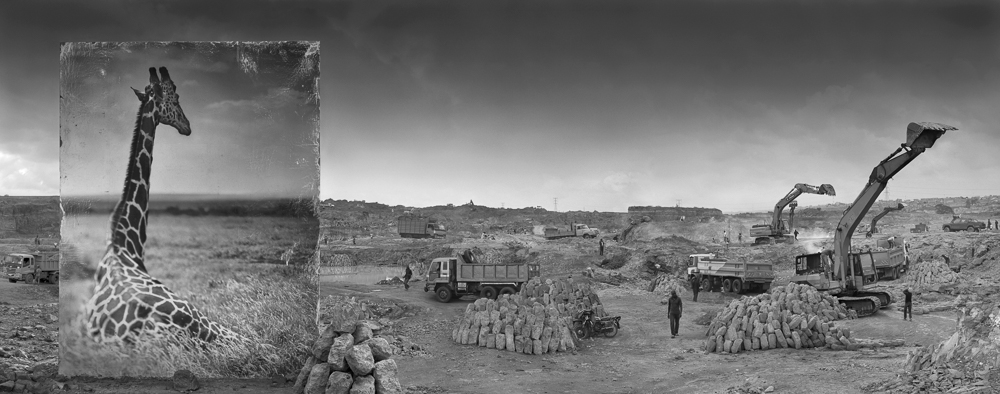
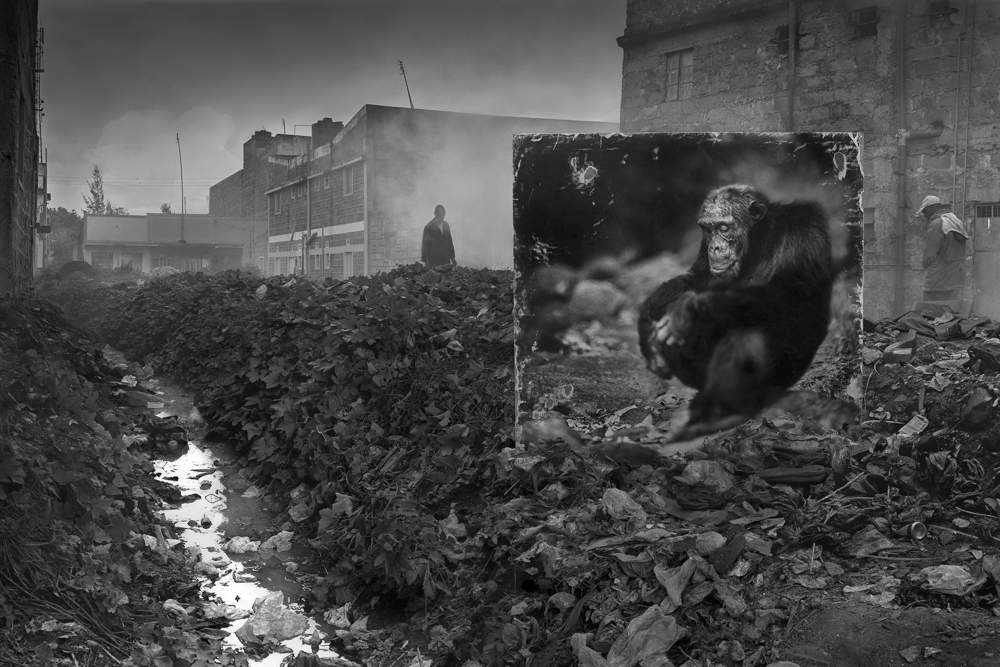
What drove your decision of using real life physical prints on huge aluminum frames, with the associated logistic challenges, instead of compositing the murals into the panoramas using Photoshop?
Shooting reality with the physical life-size panels present, was always going to produce far superior results technically, as everything looks more genuinely organically integrated.However, the really big difference is all the unexpected things that happened as a result of the panels being there in situ, as the local people grew accustomed to us and the panels being there.
Perhaps one location more than any sums up the above: again, UNDERPASS WITH ELEPHANTS, 2015 (Lean Back, Your Life is On Track).
Many homeless people, including mothers with very young children and babies, sleep out on the land beneath this underpass, encircled by a central Nairobi roundabout. I always knew that they would be in the photograph, as would the cruelly juxtaposed billboard beyond, featuring a well-to-do middle class African man leaning back in a chair in his garden, with the tag line beneath: Lean Back, Your Life is On Track.
But what I did not expect were all the homeless children sniffing glue. It’s hard to see here, but all those kids, some as young as 6 or 7 years old, were high on glue from the bottles hanging from their faces. Even more desperate, there is no societal or family support to enable these kids to break free from this terrible addiction. I saw many kids so strung out that their motor control was already going or gone.
As the final photo of the series, I wanted just one person, a child, to see the animals in the panel whilst all around, no-one else did.
But I never for a second imagined that this tiny boy on the right would wander into frame, fascinated by these giant elephants, and touch them with what appears to be a stick held in his hand.
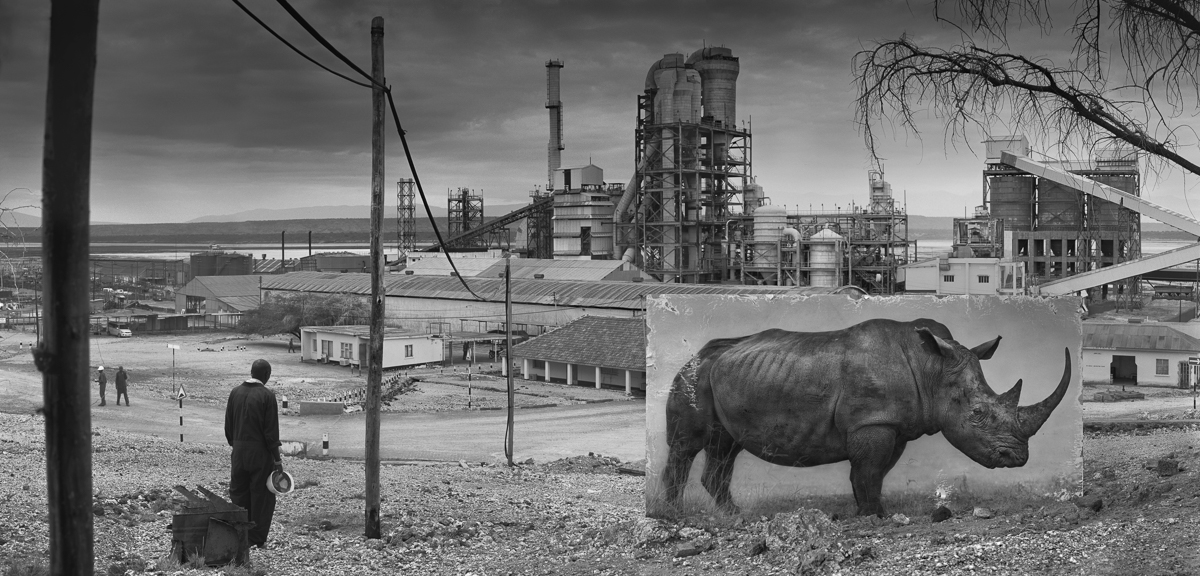
The focal planes, background details and even the cloudy skies seamlessly match between the murals and the panoramas. How did you achieve this?
It took many months of scouting throughout southern and central Kenya for locations where the horizons would align.
The toughest locations to find and align were those portraits with hills in the background. I was on the verge of giving up altogether with the photo of the rhino mother and baby (WASTELAND WITH RHINOS, 2015), when, one afternoon, walking up an unexplored road at the dumpsite, I saw an angle on the hills beyond, and discovered the perfect match of contours.
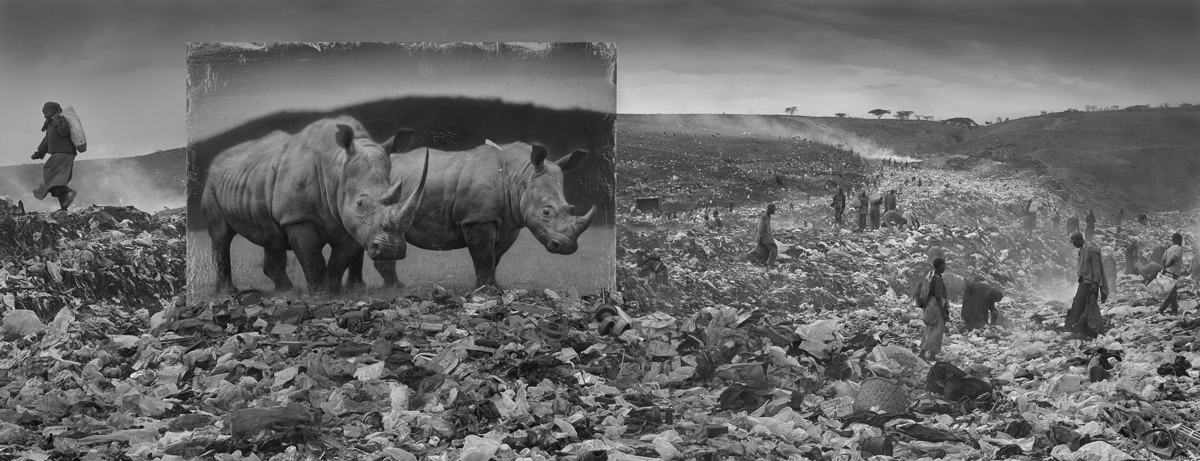
You shot this series in medium-format film cameras. How many frames, on average, were necessary for each panorama? How was the process of stitching them together?
Typically, it would be two rows of 3-4 frames. The process of stitching was incredibly time-consuming and painstaking as like everything else, I like to do it myself, not with some program software.
You were shooting film in a remote location. How long did it take for you to be able to see the developed pictures? How did you deal with the anxiety?
Ha, undeveloped film anxiety. Yes. I’ve had years of this. This was the worst yet, as the cost of production was so much higher than ever before. I would fly people with the undeveloped negative to my lab in the UK every few weeks to be processed and contact sheets made. However, after 8 weeks shooting, I went home, and discovered that both my cameras had bad mirrors, and there was motion blur on most of the frames. This was only visible when the negs were scanned and blown up. It had not occurred to me to do that.
So I had to go back a few months later and re-shoot most of the locations all over again. It was incredibly stressful, horrifyingly expensive, but in the end a blessing in disguise, as my reshoots produced better results due to what I had learned from the first shoot (I did the reshoot in 3 weeks).
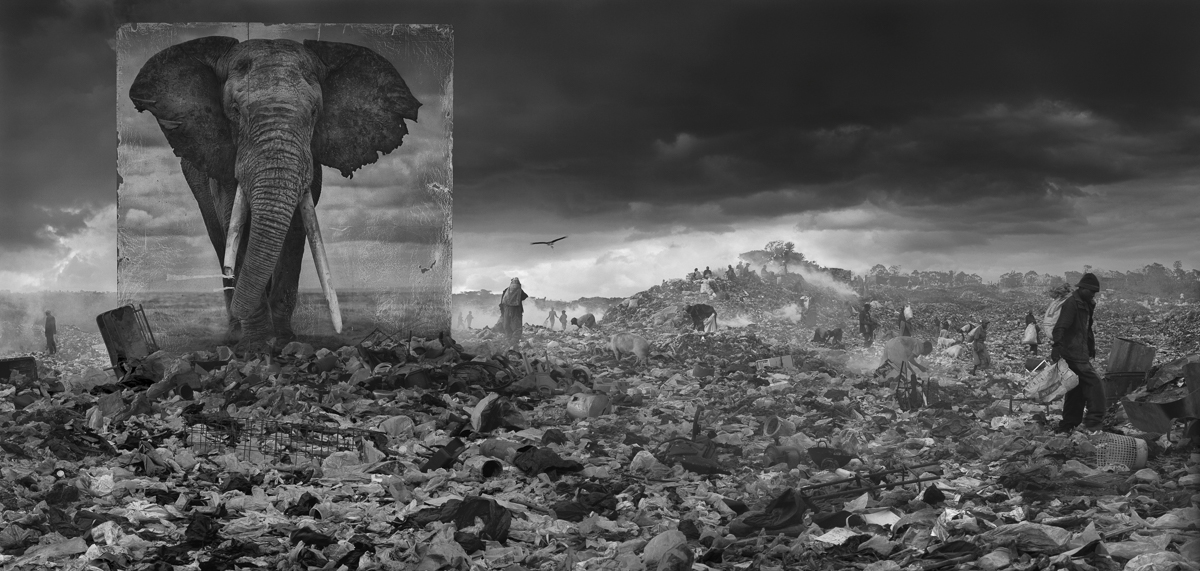
“Inherit the dust” is an ominous warning. What do you feel the future has for us, and what are your hopes for the future?
As I mention in my essay, if we continue to do nothing, future generations will be inheriting the sad remnants of a once-vibrant living planet. They will be inheriting dust.
However, countries in the developed world have the power to help, to mitigate the damage. But the anti-science crowd in the United States continues to willfully disregard the overwhelming scientific consensus on man-made climate change. Their greed, ignorance and obstructionism, and deliberate dissemination of misinformation, is allowing, and will allow, many millions of people and animals to suffer and die, possibly for centuries to come.
Of course, many people may not care that man has killed all the animals and despoiled the earth, such is their focus on personal financial profit at the expense of all else. But as the environmentalist Judy Bonds once said, “There are no jobs on a dead planet".
Personally, I feel that if you are making an effort to do something, anything, to improve life on this planet - no matter how local, how small - it is good, it is important and worthwhile, and you should be thanked for it. Whether you are the President signing legislation for more renewable energy or designating a new national marine reserve, or you’re deciding to no longer eat meat from factory farms, or you’re collecting used cans to take to the recycling center, thank you for doing something.
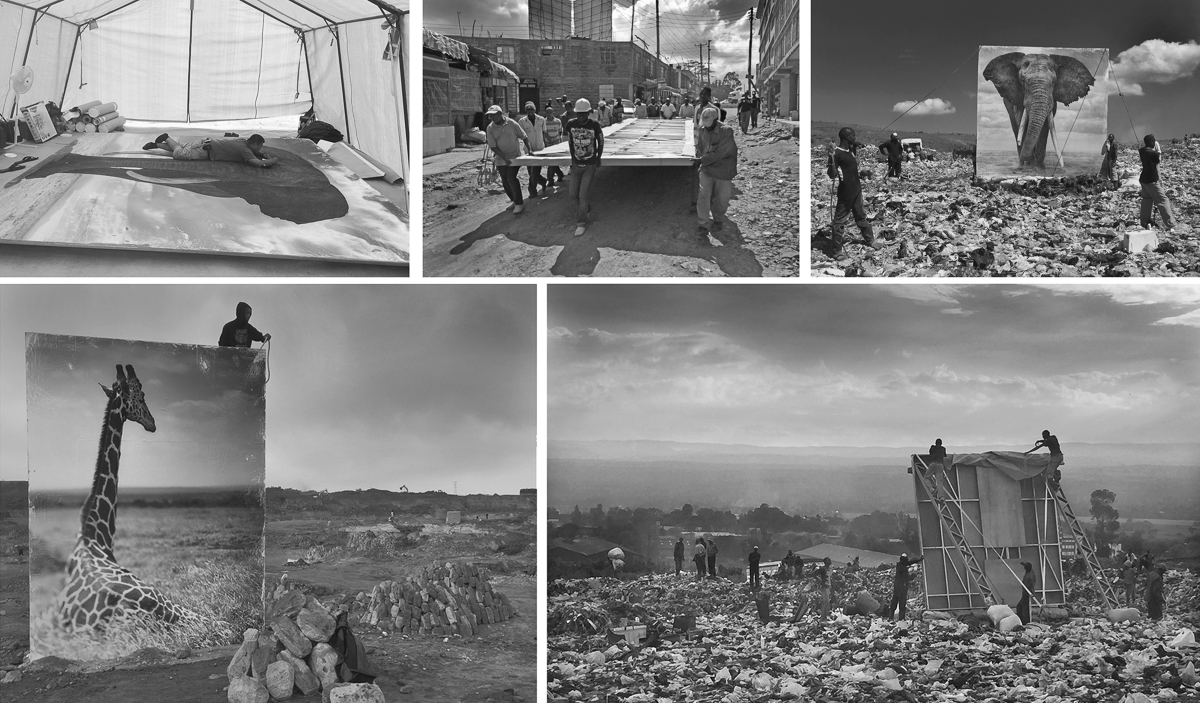
Nick Brandt | Website




